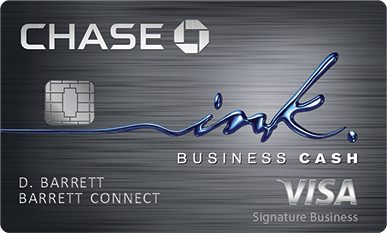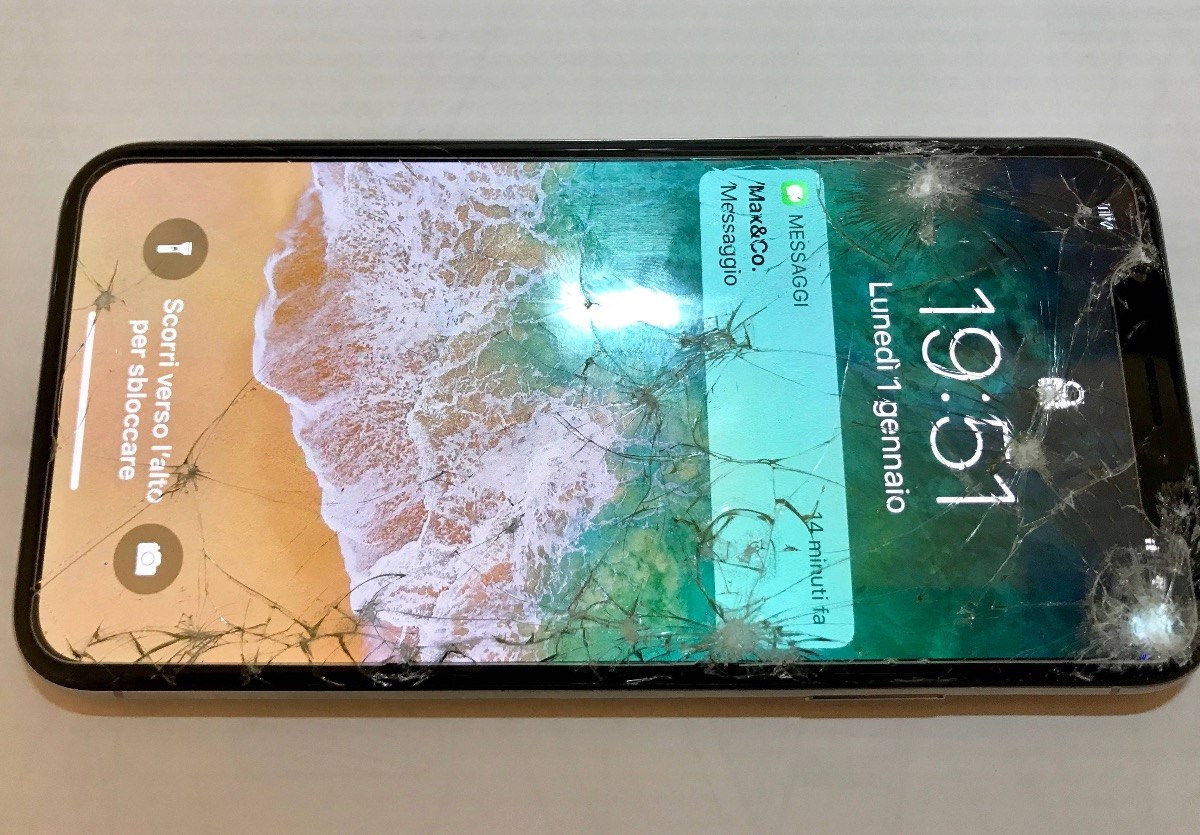Earning points on recurring charges, like your cell phone bill, is an easy way to build your balances without much effort. All you need to do is set up a monthly payment with the card you have that earns the biggest bonus for that category and you’re set. I have a card earning 5x points on telecommunication charges, so why would I willingly pay my bill each month with a card earning less?
I don’t always choose the card that earns the most points. Although it’s an important factor, other things can sway my decision to use a different card. As I’ve mentioned, I tend to avoid taking risks, and if sacrificing a few miles means I can have some added security, I would usually make that choice.
I previously used the Ink Business Cash to pay our cell phone bill. While it took me forever to convince Chase I had a business, they were willing to give Sharon an Ink Bold card years ago (granted, she had the 1099’s and W2 forms to back up her application). When that card was phased out, we changed it to the Ink Cash, which had almost identical benefits with no annual fee.
This card from Chase has some fantastic bonus categories, earning 5% cash back on the first $25,000 spent in combined purchases each account anniversary year at office supply stores and internet, cable and phone services. It also earns 2% cashback on the first $25,000 spent in combined purchases each year at gas stations and restaurants.

Earning 5% cashback is a great return, but it can be even better if you have one of the other premium Chase cards since you can transfer points from your Ink Cash card to a card like the Sapphire Preferred. You can then use the points for travel bookings at 1.25 cents per point (giving you a 6.25% return) or transfer the points to a hotel or airline program to easily earn more than 2 cents per point (a 10% return).
However, I changed the card on our T-Mobile bill right after being approved for the Ink Business Preferred because it provides one perk I didn’t get from the Ink Cash. A few readers have pointed out that T-Mobile charges an extra fee for payments made through credit cards. I did not include this fee in the calculations as the article did not focus on a particular carrier. Since I personally use T-Mobile, I used them as an example.

Cell Phone Protection
You don’t have to pay for the phone with the card for your phone to be covered; you only need to pay the phone bill with your Ink Preferred card. The coverage starts the day following your cell phone monthly bill payment and remains in effect until the last day of the calendar month following the payment. Unlike other coverages, there’s no restriction on how old the phone is or when you purchase coverage, which is nice because I might keep my $1000 phone for more than 2 years before upgrading.
Here are the details of the coverage:
Get up to $1,000 per claim in cell phone protection against covered theft or damage for you and your employees listed on your monthly cell phone bill when you pay it with your credit card. Maximum of 3 claims in a 12 month period with a $100 deductible per claim.
The downside is that the Ink Preferred’s bonus categories aren’t as generous as the Ink Cash, which has always confused me as to why the free card earns more points than the one with the $95 annual fee. The Chase Ink Business Preferred earns 3X points on the first $150,000 spent in combined purchases for each account anniversary (not calendar) year in the following categories.
- Travel
- Shipping Purchases
- Internet, cable and phone services
- Advertising purchases with social media sites and search engines
You can check out my review of the Ink Preferred card at this link.
Looking at the options
Am I making the right decision by giving up the points? Let’s break it down by phone line because the math is more straightforward:
I earn 3x points for my T-Mobile bill when I pay with the Ink Preferred. Our bill is around $120 a month (or $60 per line), so I’m missing out on 120 Ultimate Rewards Points per month (per line). If I wanted to buy any other type of insurance for the phone, the plans are typically for 24 months. 120 points x 24 months = 2880 points. If I value the points at 1.5 cents each (what they’re worth at the Chase Travel Portal with the Chase Sapphire Reserve), the points are worth $43.20
Most cell phone insurance plans need to be purchased when you get the phone, but I’ll assume I’m buying a new phone and can still get any coverage for this exercise.
- Allstate (Formerly SquareTrade) – $8.99/month. $149 deductible for all claims.
- T-Mobile – Prices vary by phone but run from $7 to $25 monthly.
- AppleCare+ – $9.99 per month or $199 for 2 years. $29 deductible for screen replacement and $99 deductible for other damages.
The best deal here would be the AppleCare+, which has a lower deductible for screen damages and otherwise has similar coverage.
With insurance for a $1,000 phone, my choices are to pay with the Ink Cash, earn the extra points (+$43.20), and purchase AppleCare+ coverage (-$199), which leaves me -$155.80. Or I can pay with the Ink Preferred and earn fewer points (-$43.20) but get free coverage ($0), putting me at -$43.20.
Final Thoughts
After looking at the numbers, there’s no comparison between the two options. Using the card that includes cell phone coverage saves me $199 over 2 years. For that coverage, I’m only giving up $43 in points. In most cases, earning fewer points and using the card that includes the coverage is worth it.
Want to comment on this post? Great! Read this first to help ensure it gets approved.
Want to sponsor a post, write something for Your Mileage May Vary, or put ads on our site? Click here for more info.
Like this post? Please share it! We have plenty more just like it and would love it if you decided to hang around and sign up to get emailed notifications of when we post.
Whether you’ve read our articles before or this is the first time you’re stopping by, we’re really glad you’re here and hope you come back to visit again!
This post first appeared on Your Mileage May Vary

5 comments
You didn’t address the autopay discount that will now be lost if you use a credit card with T-mobile…. or did that new policy disappear after all the complaints. I’m dealing with that decision now, whether to use the Ink Preferred and pay an extra $20 a month.
Are you factoring in the fact that Tmobile doesn’t give you an autopay discount if you pay with a credit card? That’s a difference of $5 per line per month.
You switch providers. I was with T-Mobile for years but they lost me over credit card fees. You should look into Google Fi. Any travel blogger worth their salt should already be on Google Fi but I digress. They use the same towers $20 a month per line for 4 lines. Their $40 plan was awesome 50gb hotspot 5g speeds in China for no additional cost. Bypassed the great firewall of China and allowed me to run my work Gmail and watch YouTube. Screw all of the idiot new hire mbas that thought that was a good idea. There’s too much choice now in the cell phone space to take a sub par deal. Having to choose between auto pay discount or cell phone coverage is a subpar deal.
With t-mobile though, don’t you forfeit like $10/per line/per month if you use a credit card vs. using a bank account?
Nice analysis. I guess a lot depends on how often bad things happen to your cell phone. I’ve been lucky enough to never lose or damage a cell phone although I may or may not have tested the waterproof aspects of Apple phones when I tried to swat a mosquito while holding a beer and my phone while in a swimming pool in Cambodia.